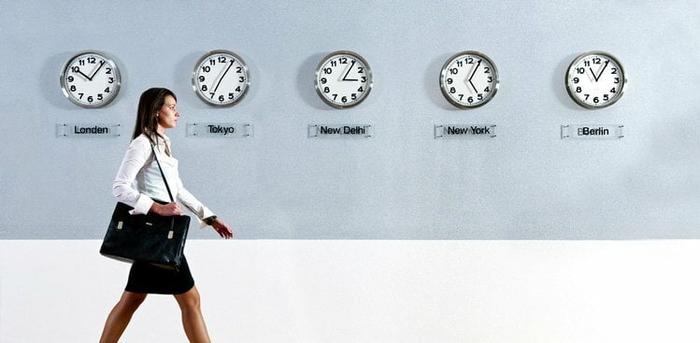
In a former life, I used to travel a lot. I'm talking weekly flights back and forth from NYC and London a lot. And while that jet-setting lifestyle may sound glamorous, it's generally just exhausting.
But, during those red-eyed years, I learned quite a few travel hacks to banish jet lag and get as much sleep as possible—tips I still use during my (less frequent) travels today. Next time you're on a cross-country or global trek, try them out.
Remember: Timing Matters
There are three numbers you want to be acutely aware of during every trip: the length of the flight, the time difference between where you are and your destination, and your departure time. These will allow you to pick the best travel time, which can have a big impact on your health and happiness.
If your flight is less than six hours, it'll be hard to get a full night's sleep, so book a daytime flight, if possible. If you must take a red-eye, leave on the latest flight of the evening. The faster your body can get to sleep, the better, whereas if you take off at 7 PM and land at midnight, it's going to be a rough ride.
To maximize sleeping time, don't eat on the plane, and ask the flight attendants not to wake you for meals. When I used to fly to London on a red eye every Sunday night—which is only a six-hour trek—I took the 10:35 PM flight, had dinner and a glass of wine in the airport, and went to sleep as soon as the plane took off. (Oh, and a word to the wise: If you use any sort of sleeping aid, don't take it until wheels are up. I've known flights to be canceled due to weather after taxiing, and you don't want to be the drowsy guy or gal on Ambien who can't drive home.)
Commit to Your New Time Zone
The minute the plane takes off, you're on destination time. Change your watch and iPhone, and start thinking about your flight in those terms. In some cases, that means you should be getting some rest, because it's 3 AM in London. In other cases, it means staying up a little longer even though you're tired, as it's dinner time in San Francisco. It's tough, but trust me: There is nothing that hurts your jet lag ninja skills more than thinking and talking about what time it is wherever you're flying in from.
Take Care of Yourself on the Plane
Whether you're resting, reading, or zoning out to bad movies, you can improve the state of your body when you land with a few tricks. The first: hydrate. The air in a plane cabin is pressurized, and the humidity in the air drops from 40-70% on the ground to 20% in flight. Drink a lot of water when you first get on the plane to counter that, and if you choose to drink alcohol or coffee, drink two glasses of water for each cup of caffeine or booze. This'll help your energy levels when you land.
I also always bring comfy Aloe socks—warm feet help me get to sleep, and these babies are much more comfortable than keeping my shoes on. The Aloe also helps keep your feet moisturized! Finally, I like to take few minutes to meditate at the beginning and end of the flight to cap off my routine.
Up Your Game for 8+ Hour Time Changes
I've heard that for each time zone you cross (where the clock moves forward or back by an hour), it takes a day for your body's natural rhythm to re-adjust to the change. That definitely seems extreme, but I do see a 5-7 hour time difference take average travelers up to three days to adjust to.
But, there is a crazy strategy that can keep you from wasting a week on jet lag when you're flying halfway across the world. If you're willing to do a little body hacking, I recommend getting on destination time 48-72 hours in advance of your flight. (Bear with me, I know it sounds a little crazy.)
Here's an example of how it works: When my parents lived in Singapore for a few years, I went out to visit them from New York. Two long flights, plus a 16-hour connection in Dubai, gave me a total trip time of 38 hours, landing in a time zone 12 hours later. (Singapore is quite literally across the globe from NYC.) Since I was flying east, three nights before leaving, I started going to bed earlier than usual, closer to European time, getting me part of the way there. Since my flight was taking off at 11:20 AM NYC time (11:20 PM Singapore time), being tired was a must so I could sleep on that first flight. All it took was an all-nighter the night before, and boom—I started my first flight already on my destination time. I had only two or three hours of jet lag when I arrived, mostly just making me more of a morning person than usual, and I was able to enjoy each day of my trip a lot more. I did the reverse on the way back and went straight back to work when I landed. It's wacky, but it works.
Want more? Check out our tips for getting to sleep on a red-eye.